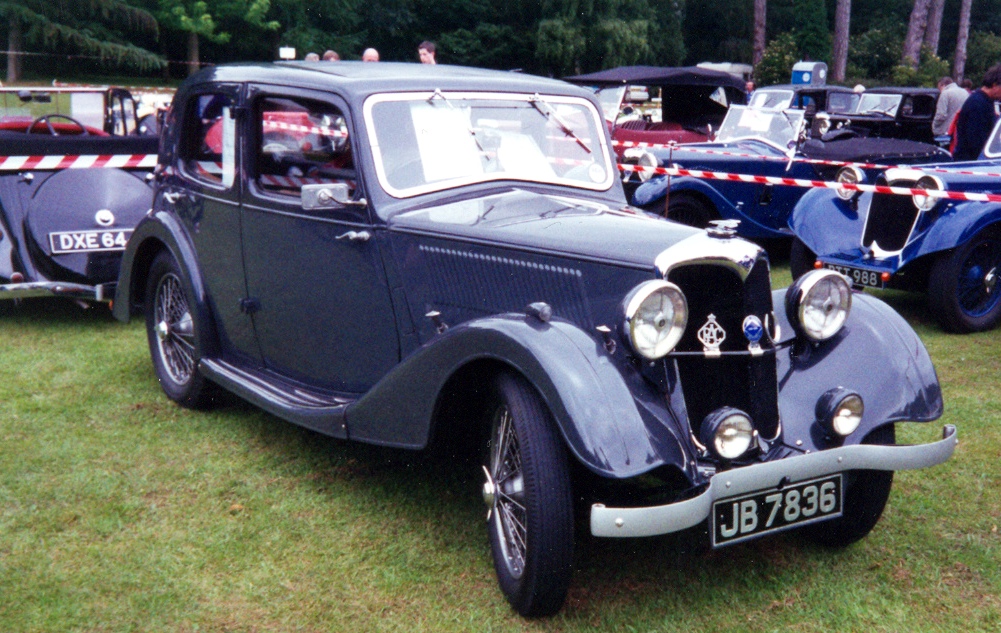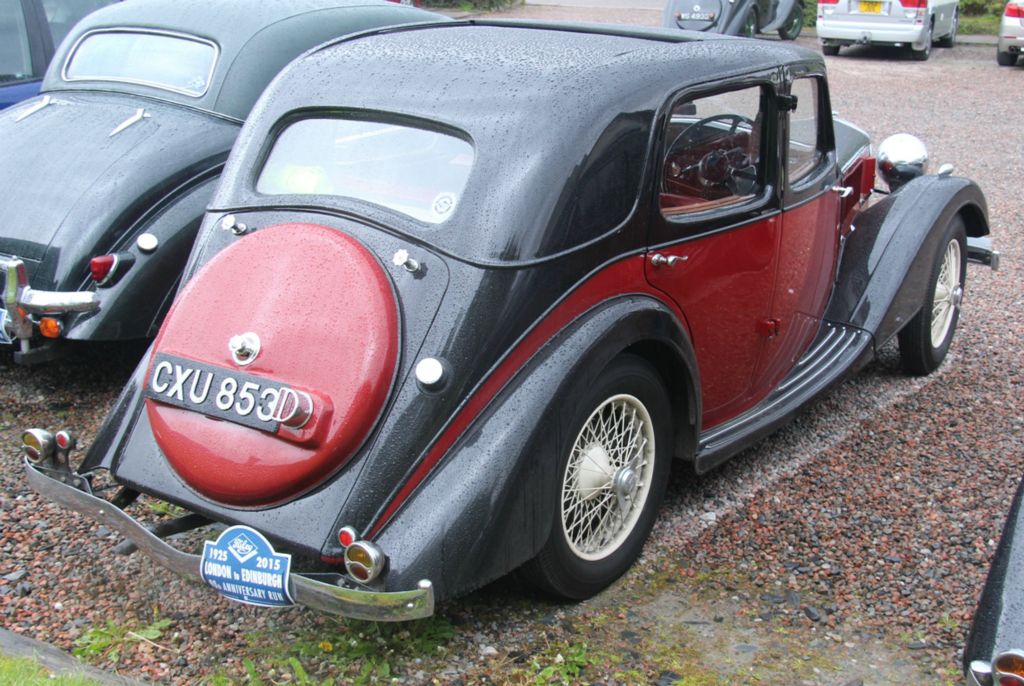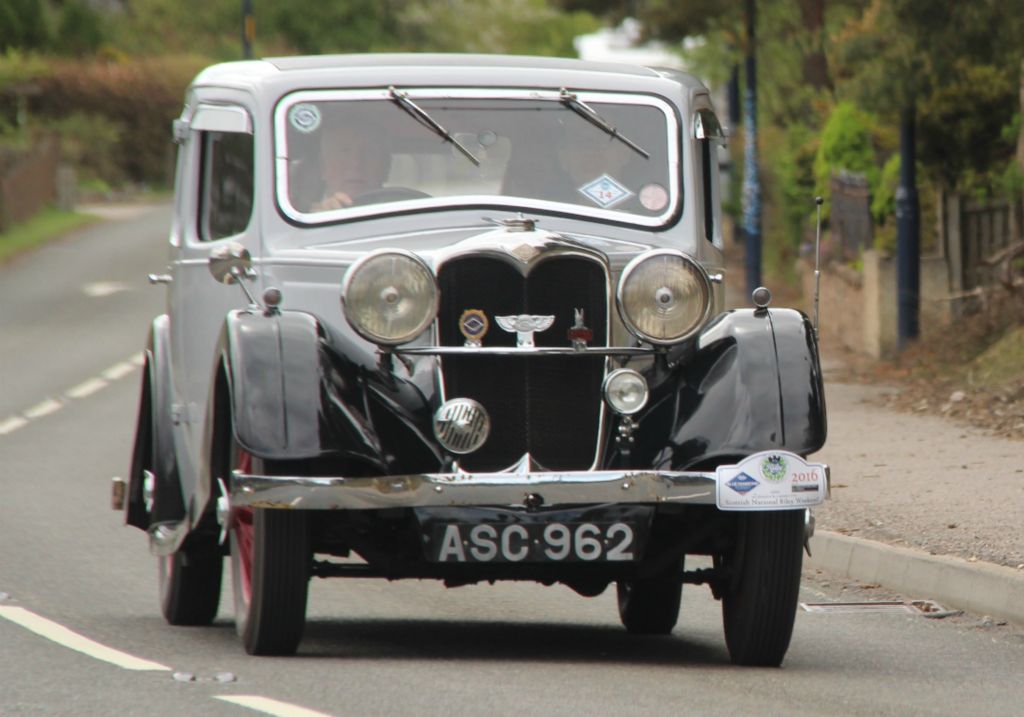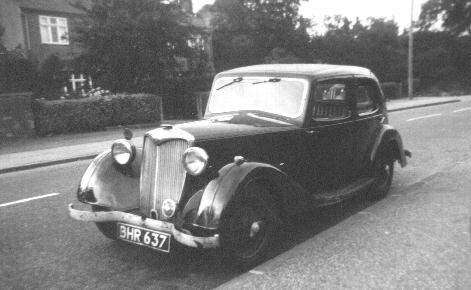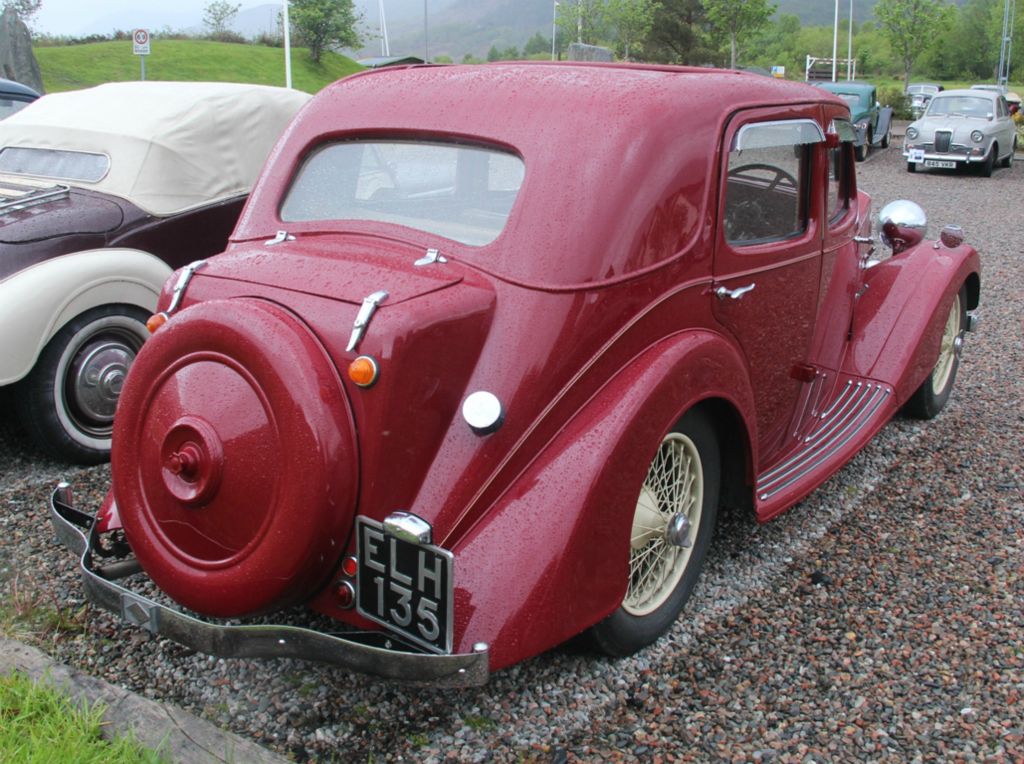Riley Briggs Bodies
In 1935 Riley signed a contract with Briggs Bodies of Dagenham to mass produce steel bodies. The intention was to create a more uniform and stronger bodyshell, freeing up space in Rileys own bodyshop. There was the additional benefit of making the cars quicker and cheaper. Unfortunately, after some initial success, the plan backfired and towards the end Riley were trying ever more desperate ways of selling the stockpiled bodies. It is not known what minimum volume the contract agreed upon, although a figure of 5,000 has been suggested, perhaps over the span of a 2 or 3 year contract (at the time full annual production was only around 5,000 cars). However, at the end Riley had a larger number of stockpiled bodies, whilst dealers were struggling to sell the cars they already had.
Merlin
Chassis:Riley Archives Project: Riley Merlin
The first evidence of the new contract was the 1936-season 9 and 12/4 Merlin. Riley launched the Merlin on it's own unique chassis, which was shorter and narrower than the standard 12/4 chassis, and with either the 9 or 12/4 engine. This aided the visual identification to the expert, but otherwise there are few clues externally. Inside, the upholstery was of a slightly lower quality, with fewer fittings to enable Riley to sell the car at a lower price.
The Merlin proved succesful, particularly on the nine chassis where it replaced the ageing Monaco range. However, the quantities originally envisaged were never realised, and Riley had started to stockpile bodies by the end of 1936. Additionally, the heavier weight of the steel body rendered poor performance with the 9 engine, which was not up to Riley's expected standard.
Falcon
Chassis:Riley Archives Project: Riley Falcon
Whilst the Merlin continued with the 9 engine, the 12/4 was abandoned in favour of pushing the model upmarket and using the Briggs Body to replace the ageing Falcon design. Considering that the Briggs body was modelled on the 12/4 Falcon of 1935, it seems strange that it took so long to utilise the new steel body. Better trim levels were used to disguise the fact that this was essentially the previous years Merlin, moved upmarket. However, the model failed to sell as many as the '36 Falcon, and only marginally more than the '36 Merlin.
Victor
Chassis:Riley Archives Project: Riley Victor
Replacing the Merlin, the Victor was even more spartan to target a price of £299 (again with either engine), although this soon went up. At the time of launch, Briggs had changed over to the Touring Saloon body, so initially at least the Victor used the stockpiled bodies already produced. It is unclear whether Briggs produced any later batches of Victor bodies.
There is some uncertainty as to how serious the Nine engined variant was, with it being priced the same as the larger and more powerful 12/4 engined variant. Some consider it to be a sideline, whilst others believe it to have been seriously marketed.
Never the success that was hoped for, particularly with the Nine engine, partly due to the general problems that Riley were experiencing by late 1937. It could have been a good car with a little more spent on the development.
Touring Saloon
Chassis:By late 1936 Riley had already started stockpiling Briggs Bodies, and by mid 1937 it had started to get out of control. As such, Briggs were asked to adapt the design to produce a new model - the Touring Saloon. The biggest change was the rather ungainly bulbous trunk on the rear. Despite the extra size, the design made this boot rather impractical, with top access only, and a fixed spare wheel at the rear. Therefore, yet again a potentially good car was let down by a lack of development money!
Available on the 9, 12/4 and 16/4 chassis, Riley were trying their best to sell as many cars as Briggs were building bodies, but there were too few takers, and when the administrators were called in, the Briggs Contract was cancelled immediately. For full details of the problems surrounding fitting the body to the 16/4 chassis, see it's spec page.
Production estimates
Looking at the projected production figures, it seems that Riley's problem is obvious. Strong sales for 1936 model year cars were succeeded by poor demand for 1937 and 38.
| Model Year | Briggs Bodied Cars Built | Total Production | Percentage | Notes | |
| Std | TS | ||||
| 1936 | 2011 | 5025 | 40% | Long Model Year, may include some pre-Briggs Falcons | |
| 1937 | 704 | 115 | 3647 | 22% | |
| 1938 | 294 | 117 | 1122 | 37% | Receivers called in Feb 38, Briggs contract cancelled |
Even allowing for the fact that many '36 models may have been stockpiled and sold during 1937, it is readily apparent that sales were going down hill, and that the contract figures were looking hopeless. The higher percentage for 1938 cars can be explained by the stockpile of bodies being used up after the receivers were called in, substantially reducing the number of coachbuilt cars that could be produced.

